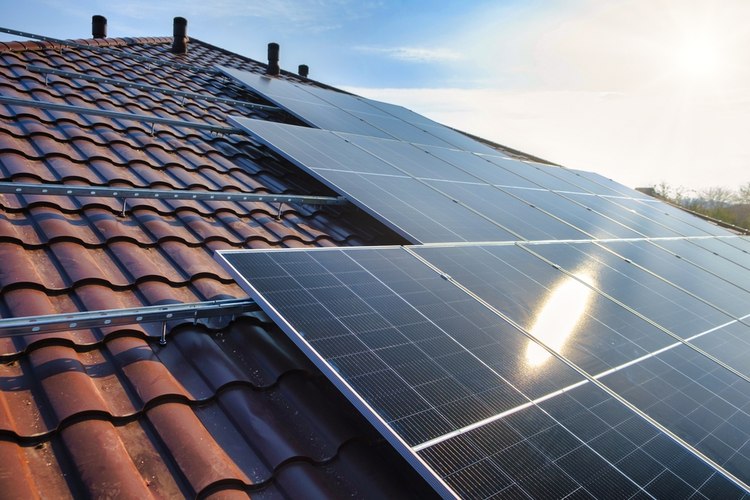Solar Panel Installation: Costs, Timeframe, and Top Companies in Australia
The shift towards renewable energy has made solar power systems increasingly popular in Australian homes and businesses. As electricity prices rise and environmental concerns grow, many are considering solar panel installation as a sustainable and cost-effective energy solution. Understanding the installation process, timeline, and costs involved helps potential solar adopters make informed decisions. From initial assessment to final connection, solar panel installation involves several steps, and knowing what to expect regarding timeframes and expenses is crucial for planning your transition to solar energy.

How Fast Can Solar Panels Be Installed?
The actual installation of solar panels can be surprisingly quick, typically taking just 1-2 days for a standard residential system. However, the entire process from signing a contract to having a fully operational system usually takes 2-8 weeks. This timeline includes several phases such as site assessment, system design, permitting, installation, and final grid connection.
Factors affecting installation speed include system size and complexity, roof type and condition, weather conditions during installation, and your local council’s inspection and approval processes. Simple installations on single-story homes with ideal roof conditions can be completed faster, while multi-story buildings or complex roof structures may require additional time.
What Happens During Solar Panel Installation?
The solar panel installation process follows several distinct stages. Initially, a site assessment determines your property’s suitability for solar, including roof orientation, angle, and structural integrity. Next comes system design, where professionals calculate your energy needs and design an appropriately sized system.
After obtaining necessary permits and approvals from local authorities, the physical installation begins. This typically involves mounting rails to your roof, installing the panels, connecting the electrical components including inverters, and setting up monitoring systems. Once installed, the system requires inspection by a certified electrician and approval from your electricity distributor before being connected to the grid. Most reputable installers handle all these steps, making the process relatively seamless for homeowners.
What Are the Most Popular Solar Panel Installation Companies in Australia?
The Australian solar market features several highly-regarded installation companies known for quality work and reliable service. Origin Energy stands out as one of Australia’s largest energy retailers offering comprehensive solar solutions with strong warranty coverage. Solargain has built a national presence with over 70,000 installations and excellent customer satisfaction ratings.
Other notable providers include True Value Solar, known for competitive pricing; Energy Matters, respected for quality installations and customer education; and AGL Solar, which leverages its position as a major energy retailer to provide integrated energy solutions. Local installers often compete effectively with these national brands by offering personalized service and community-based expertise. When selecting an installer, look for Clean Energy Council accreditation, solid warranties, proven experience, and positive customer reviews.
How Much Does Solar Panel Installation Cost?
Solar panel installation costs vary significantly depending on system size, panel quality, and installation complexity. In Australia, residential solar system prices typically range from $3,800 for small 3kW systems to $9,000+ for larger 10kW systems, after accounting for government incentives such as Small-scale Technology Certificates (STCs).
System size is the primary cost determinant, with larger systems costing more but offering better value per kilowatt. Panel quality also affects pricing—premium panels from manufacturers like LG and SunPower cost more but offer better efficiency and longer warranties compared to budget options. Additional components like battery storage can add $5,000-$15,000 to the initial investment.
| System Size | Typical Price Range (After STCs) | Average Annual Savings | Estimated Payback Period |
|---|---|---|---|
| 3kW | $3,800 - $5,000 | $900 - $1,200 | 3-5 years |
| 5kW | $4,500 - $6,500 | $1,400 - $1,800 | 3-4 years |
| 6.6kW | $5,500 - $7,500 | $1,800 - $2,300 | 3-4 years |
| 10kW | $8,000 - $12,000 | $2,700 - $3,500 | 3-5 years |
Prices, rates, or cost estimates mentioned in this article are based on the latest available information but may change over time. Independent research is advised before making financial decisions.
What Factors Affect Solar Panel Installation Costs?
Beyond system size, several factors influence the final cost of your solar installation. Your location plays a significant role, as installation costs and government incentives vary between Australian states and territories. Queensland and South Australia typically offer more generous solar rebates than other regions.
Roof accessibility and complexity significantly impact labor costs—installations on multi-story buildings or complex roof designs require more time and safety equipment. The chosen mounting system (flush mount vs. tilt frames) and inverter type (string vs. microinverters) also affect overall pricing. Additional electrical work such as switchboard upgrades, if required, can add $800-$2,000 to the project cost. Finally, quality variations in components—particularly inverters and mounting hardware—can make substantial differences to both upfront costs and long-term system reliability.
Are Solar Panel Installations Worth the Investment in Australia?
Solar panel systems in Australia typically provide excellent return on investment, with payback periods ranging from 3-7 years depending on system size, energy consumption patterns, and local electricity rates. With panel warranties generally lasting 25+ years, this creates 18+ years of essentially free electricity production.
The economics are particularly favorable in areas with high electricity rates and abundant sunshine. Most Australian homeowners can expect to save between $1,000-$2,500 annually on electricity bills with appropriately sized systems. Beyond direct financial returns, solar installations increase property values and provide protection against rising electricity prices. The environmental benefits are substantial too—a typical 6.6kW system prevents approximately 10 tonnes of carbon emissions annually, equivalent to planting over 150 trees each year.
For maximum financial benefit, timing your energy usage to coincide with solar production or investing in battery storage can significantly increase self-consumption rates and improve your overall returns. While the initial investment is substantial, solar panel installation represents one of the most reliable financial and environmental investments available to Australian homeowners.




